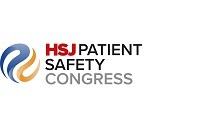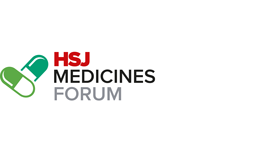Evidence is one factor that helps to “de-risk” an innovation and accelerate its adoption and spread, but there are a range of assurances and mitigations that can support and speed up successful implementation, says Dr Amanda Begley

At the NHS Innovation Accelerator, we’re frequently asked by potential applicants and NHS sites: “what evidence is needed to get on the NIA?” A focus primarily on evidence tends to provoke diverse opinions, often resulting in a debate that can stall rather than accelerate adoption. So, the question of whether an innovation is “ready” or “right” for the NIA is much broader than simply assessing the evidence base.
NIA assessors are drawn from a broad range of experts to ensure that we capture the views of those using and implementing the innovation. This includes patients, clinicians, commissioners, commercial experts, and academics. Sometimes, assessors agree unanimously on the value and readiness of an innovation; other times views vary.
NIA shortlisting and selection – aka de-risking an innovation
The role of the NIA shortlisting panels is to review assessor scores and comments against selection criteria (including, but not limited to, evidence) to determine the best applicants and the most impactful innovations. For each innovation, an informed decision is taken on “risk”: are there any clinical, financial, regulatory or reputational risks?
When thinking about an innovation’s readiness for the NIA, the primary focus is the intended users
If so, can these be mitigated? Finally, these panels determine if we can – via support available on the NIA – help to de-risk the innovation for users and accelerate uptake.
Why do we include a focus on risk in NIA selection and delivery?
Risk management is a widely used and well-established practice within the NHS. It is not used to prevent delivery, but to provide assurance that projects (including adoption of an innovation) are being robustly and safely implemented within an agreed governance structure.
S.A.F.E.R
So, what does de-risking involve? How can we make the adoption of innovations “SAFER”?
-
Are there opportunities to Share risk?
If patients and the NHS are not the sole bearers of the risk, an innovation can become more attractive. Sharing risk can include a range of mechanisms; from patients making informed consent, to a business model where buyers only pay for the innovation at agreed milestones and/or when outcomes are delivered.
-
How can the innovation be Adopted and adapted?
If users have concerns about adopting an innovation, there are tried and tested methods like co-design and quality improvement, which can help de-risk its implementation. Robustly identifying opportunities for users to adopt and adapt an innovation to their local context.
An NHS site may, for example, want to use the innovation with one patient and one clinician and then review – using “Plan Study Do Act” cycles – before adapting and expanding its use.
NIA Fellows are open to this adaption, and also share practical insights (like Care City’s Blueprint for AliveCor’s Kardia) across sites, facilitating knowledge transfer for time constrained NHS staff.
-
Who are the Followers?
It’s hard to be the first person to use an innovation. Risk is reduced if patients and NHS staff have been involved in its development; the innovation is already in use in the NHS; there are credible advocates; awards have been won; the innovation has been selected onto well-respected national (eg NIA, SBRI) or regional innovation programmes (eg academic health science network digital accelerators, like DH.LA).
To quote Steve Woolgar, innovation is: “the art of interesting an increasing number of allies who will make you stronger”.
-
What’s the Evidence base?
Evidence is critical, albeit not a necessary or sufficient condition for innovation use. The level of evidence needed depends on how the innovation is to be used (eg diagnostic, invasive), its cost, its theory of change, the extent of its promise, etc.
Evidence can reduce risk for the user by answering pertinent questions on safety, clinical effectiveness, patient or user centredness, timeliness, efficiency, equitability.
Helpful guides (eg Evidence Guide for App Developers) provide frameworks for us to assess an innovation’s evidence.
However, evidence gaps aren’t a reason not to use an innovation. Many NHS sites choose to participate in strengthening the evidence base – eg firming up the economic case, trialling the innovation in a new pathway – if they see an innovation’s value and can manage any risks to its use.
-
Does the innovation adhere to Regulatory requirements?
Within an understandably heavily regulated sector like healthcare, it is essential that innovations meet regulatory standards and legal requirements specific to the nature of the innovation and its use. Adherence needs to be openly and robustly demonstrated to alleviate any concerns for the user.
When thinking about an innovation’s readiness for the NIA, the primary focus is the intended users. Evidence base is an important consideration within this. First, we determine whether an innovation addresses a significant problem that the intended users need help with.
And if it does, we consider any concerns that users might have in adopting the innovation. Within the NIA, “risks” (including limitations in the evidence base) are not reasons to prevent the uptake of innovations for the benefit of patients and the NHS.
Risks become something to be openly discussed and mitigated, helping to make the adoption of an innovation SAFER.
The NHS Innovation Accelerator is a partnership between the AHSNs and NHS England, hosted at UCLPartners.

























No comments yet